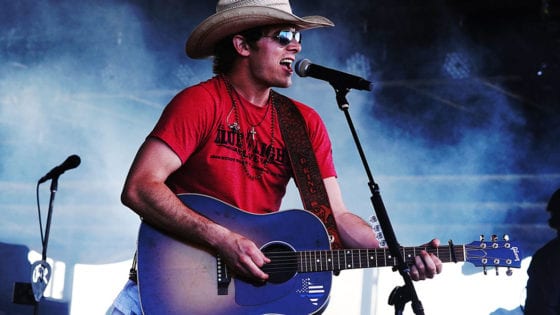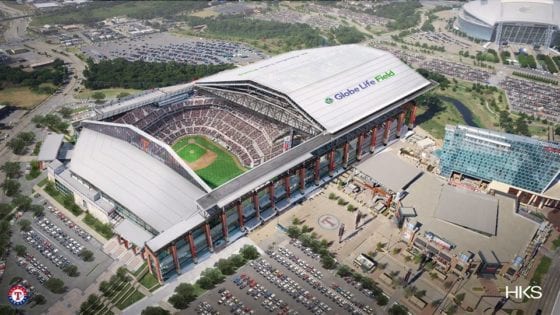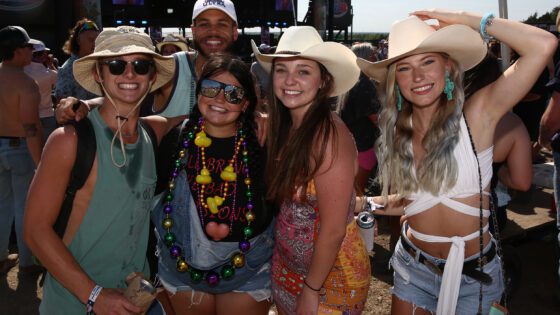| Modern Art Museum of Fort Worth
2019-2020 Advanced Exhibition Schedule |
| Julie Bozzi: American Food
September 7, 2019-February 2, 2020 The Modern presents Julie Bozzi’s American Food, 1980-92, acquired by the Museum for the permanent collection in 2019. Bozzi’s sculptural installation consists of an oak cabinet with 13 drawers, 12 of which contain miniature reproductions of American food products, each carefully handmade by the artist and displayed under glass, like scientific specimens from a natural history museum. The food items are categorized into distinct genres, including cereals, snack cakes, and breakfast meats, which are indexed in the 13th drawer. In the exhibition, the 12 drawers containing the food models are mounted on the wall and paired with framed drawings that act as graphic keys to their contents. Bozzi, a longtime resident of Fort Worth, began her research for American Food in 1975 and created the work between 1980 and 1992. The miniature food facsimiles, meticulously crafted from wood, plaster, clay, paint, and other materials, represent standardized commercial American food products, from donuts to Ding-Dongs, along with “Americanized” versions of ethnic cuisines. Working in the pre-internet era, Bozzi conducted her research using methods akin to an anthropologist or explorer, collecting source material from menus, grocery stores, food stands, advertisements, and oral interviews during cross-country road trips. Like the landscape paintings Bozzi is also known for, American Food addresses the vernacular American experience. The installation combines aspects of Pop art, postmodernism, still life, and Americana, while underscoring the universal human impulse to collect and categorize. More than twenty years after its making, the work endures as a witty and visually engaging statement about American consumerism and its culture of abundance. American Food was originally organized by the Museum of Contemporary Art San Diego in 1992 and traveled to the Modern in 1993 as part of a national tour. Robyn O’Neil: WE, THE MASSES October 18, 2019-February 9, 2020 The Modern Art Museum of Fort Worth presents a 20-year survey of the work of Robyn O’Neil (American, born 1977). Organized by the Modern’s associate curator Alison Hearst, the exhibition Robyn O’Neil: WE, THE MASSES explores the artist’s fruitful career from 2000 to the present and includes major multipaneled drawings, signature works of graphite on paper, collages, and the animated film WE, THE MASSES, 2011. This in-depth presentation is the first to examine O’Neil’s formal and conceptual developments over the past two decades. O’Neil has created intricate, imagined worlds exploring themes of evolution, natural catastrophe, the apocalypse, and the beauty of nature. She is best known for her large-scale works populated with tiny male figures set in harsh landscapes, depicting relatable aspects of the human condition, such as friendship, strife, and death. Pulling inspiration from art history, popular culture, literature, and the weather, O’Neil’s worlds are serious, tender, frightening, and at times comical. Hearst comments, “O’Neil’s lush drawings explore cataclysmic scenarios and existential aspects of life – in both good times and bad. In her realms, the male characters witness the natural world’s unraveling, often resorting to savage, every-man-for-himself behaviors. Her characters are small within vast landscapes where beauty and nature always prevail.” Highly detailed and precise, O’Neil’s graphite-on-paper drawings are made with a .5 mm mechanical pencil and a blending stump her mother gave her when she was in the seventh grade. More recently, the artist has been exploring color in her drawings with the use of colored pencils and oil pastels. Tuesday Evenings Lecture October 15, 7 pm Robyn O’Neil is in conversation with Tyler Green of the Modern Art Notes podcast as they present “Skies in Art History” in relation to O’Neil’s drawings. FOCUS: Martine Gutierrez November 8, 2019-January 12, 2020 Martine Gutierrez’s photographs and videos explore gender, race, class, and sexuality, as well as conventional ideals of beauty and identity as a social construct. Her most ambitious project to date, Indigenous Woman, 2018, is a glossy, 146-page publication that closely mirrors Andy Warhol’s Interview magazine in form and production. Here, Gutierrez assumes the role of editor, writer, model, designer, ad executive, and photographer, with fictional advertising and high-fashion spreads where the artist continually reinvents herself throughout its pages. One section of the publication features her Demons series, in which Gutierrez assumes the role of Aztec deities – such as the goddess of beauty, Xochiquetza – that were later referred to as “demons” after the Spanish conquest. As the artist states, “Indigenous Woman marries the traditional to the contemporary, the native to the post-colonial, and the marginalized to the mainstream in the pursuit of genuine selfhood, revealing cultural inequities along the way. This is a quest for identity. Of my own specifically, yes, but by digging my pretty, painted nails deeply into the dirt of my own image I am also probing the depths for some understanding of identity as a social construction.” For her FOCUS exhibition, the artist will present photographs from the Indigenous Woman series. Tuesday Evenings Lecture November 5, 7 pm Martine Gutierrez presents a selection of her video work as an enhancement of her exhibition. Ruckus Rodeo January 17-March 15, 2020 Ruckus Rodeo, 1975-76, by the New York-based artist Red Grooms, will be presented at the Modern to coincide with the 2020 Southwestern Exposition and Livestock Show. Grooms’s immense, walk-through work of art covers 1,237 square feet of gallery space. This “sculpto-pictorama,” as Grooms has referred to it, consists of painted two-dimensional surfaces and sculptural three-dimensional figures that celebrate the Fort Worth rodeo. Sculpture wire, canvas, burlap, acrylic paint, and a fiberglass compound known as celastic were used to construct the work’s Texas-sized, larger-than-life caricatures of rodeo archetypes – including the rodeo queen and her steed, a bucking bronc, playful rodeo clowns, and a giant yellow bull named Butter. The Museum commissioned Ruckus Rodeo, along with ten other works, for the 1976 exhibition The Great American Rodeo. For his contribution, Grooms attended every rodeo performance during Fort Worth’s 1975 Stock Show. From his many sketches, he drew a panoramic rodeo scene spanning more than seven feet to serve as the basis for Ruckus Rodeo’s design. Grooms went back to his studio in New York to fabricate the work’s major figures. In 1976, he returned to Fort Worth with the talented 15-member group of painters, sculptors, engineers, and carpenters known as the “Ruckus Construction Co.,” who helped in the final assembly of Grooms’s robust tableau. Ruckus Rodeo was last on view in our galleries in 2005. Ruckus Rodeo portrays the chaos, entertainment, and danger of the rodeo. Grooms’s engaging work is characterized by a grand sense of spectacle, encompassing ritual, pageantry, and disorderly commotion. The artist’s interest in folk art puppets and toys is evident, and his rich, arbitrary use of bold, unmodulated colors combined with angular contours creates a loud, brash ambience. Despite the work’s cartoonish flair, it is inflected with an urban sensibility. The characters’ outfits, for example, are more like the vibrant apparel of the urban cowboy than the typical dusty clothing of a working cowboy. Grooms has managed to balance naiveté and sophistication, parody and reality. Ruckus Rodeo celebrates the grand heritage of Fort Worth and the mythology of the American West, and it continues to be a beloved work in the Modern’s collection. FOCUS: Hrair Sarkissian January 24-March 15, 2020 Hrair Sarkissian’s FOCUS exhibition features three major works that explore how violence can be made invisible, histories of erasure and restitution, and the sediments of conflict. In one of the artist’s most recent works, Final Flight, 2018-19, Sarkissian investigates the story of the endangered northern bald ibis, one of the rarest birds in the world and the living descendants of birds depicted in the oldest Egyptian hieroglyphs. Once thought extinct, a surviving colony of seven was discovered in 2002 in the Syrian Desert near Palmyra; however, the onset of the war in Syria in 2011 severely constrained the conservation program, and the birds disappeared again around the time Palmyra was destroyed in 2014. Sarkissian employed new technologies and age-old techniques to create sculptures of the birds’ skulls. Sarkissian’s most iconic work, Execution Squares, 2008, features fourteen photographs of public squares where executions take place in three Syrian cities – Aleppo, Lattakia, and Damascus. These executions are public events, where people who pass by become witnesses – willingly or not – to the extinguishment of life. The third work in the exhibition is the two-channel video Homesick, 2014. On one screen, a model of a four-story apartment building slowly but violently disintegrates. In the second channel of the video, the wreaker of this destruction is made visible: the artist himself. With sledgehammer in hand and his face a mixture of anger and desolation, he bashes the scale model of the Damascus apartment building where he lived until 2008 and where his parents continue to live; they have refused to leave Syria despite the unending violence. The model serves as a source of comfort and longing but also a prison of memories that have become ensnared in the extreme trauma of the present. FOCUS: Hrair Sarkissian is organized by guest curator Dr. Omar Kholeif, Director of Collections and Senior Curator, Sharjah Art Foundation. The exhibition is presented in association with the Sharjah Art Foundation. Mark Bradford: End Papers March 8-August 9, 2020 The Modern Art Museum of Fort Worth presents the exhibition Mark Bradford: End Papers. Curated by Michael Auping, former Chief Curator at the Modern, this exhibition focuses upon the key material and fundamental motif the artist employed early in his career and has returned to periodically over the past two decades. The pivotal works in this exhibition are primarily constructed from end papers, which Bradford learned to use as a hairdresser in his mother’s beauty salon in South Central Los Angeles. These small sheets of translucent paper protect hair from overheating in the process of using curlers to create permanent waves. Part painting and part collage, the colored End Paper works feature grids that contain various hues that pulsate across the surface. Bradford said recently, “I learned my own way of constructing paintings through the End Papers – how to create space, how to use color. And how to provide a new kind of content. They were the beginning for me.” Bradford’s End Paper works not only allowed him to make beautiful abstract paintings but inspired the artist’s use of “social papers” that related to his biography and his neighborhood. From the End Papers, Bradford began using merchant’s posters, broadsides, and even billboards he found in downtown Los Angeles to make his paintings. The exhibition will include approximately 35 major End Paper works drawn from private and public collections and new work created by the artist for this presentation. FOCUS: Marina Adams March 27-May 24, 2020 For more than a decade, Marina Adams has explored the relationships between color and form. In her acrylic-on-linen paintings, biomorphic forms dovetail, each structure distinguished by a solid field of color. Each painting has its own distinct palette, with diverse and unusual color combinations. While Adams sketches out her forms in charcoal before she paints, her work has an immediacy evidenced by loose, confident swathes of paint, where drips mark the canvases and bands of color overlap, creating a balance between organization and improvisation. Though often perceived as nonreferential, her compositions are prompted by textile design and architectural forms. As she states, “One of the reasons I allow my love of pattern to be predominant in the paintings is that pattern is a language that crosses boundaries. It offers common ground. I think it’s interesting that similar patterns were utilized in different places around the world, places that most likely didn’t have physical contact. We can see pattern in the most basic things and I guess what I love is that it forces you to get very basic, and it’s in basic truths that we can find communion. We find how we’re alike, as opposed to always thinking about how we’re different.” Literature and poetry play a large role in Adams’s work, especially in the artist’s use of referential titles, which offer viewers another path of entry into her works. As Adams has said of her titles, “I think they’re particularly important if you’re not giving a narrative, if you’re not giving a storyline, if you’re just presenting an experience – particularly in a literal world, and we’re in a very literal world, particularly in the West, where people want and believe in reason and ideas. I’m not giving them either. Language can exist, in the same way that color can exist; it can just be.” Hubbard / Birchler: Flora, 2017 and Bust, 2017 April 18-August, 2020 Teresa Hubbard and Alexander Birchler have worked as a collaborative artistic duo since 1990. Their projects in sculpture, film, and photography investigate how narratives are constructed, remembered, and collectively understood. The artists are best known for their meticulously crafted films that slip between documentary and invention, as with Flora, 2017, which debuted in the Swiss Pavilion for the 57th Venice Biennale in 2018. Flora was inspired by Hubbard / Birchler’s discovery of Flora Mayo, an unknown American artist who had a brief love affair in the 1920s with the Swiss sculptor Alberto Giacometti in Paris. Intrigued by a passing reference to Mayo in a biography of Giacometti, Hubbard / Birchler launched an exhaustive search to learn about this forgotten woman. In Flora, the artists bring Mayo’s biography to light through a synthesis of documentary filmmaking, historical reconstruction, and dramatic reenactment. In the gallery, Flora is installed as a double-sided film projection. Each side of the screen presents a different story while sharing a single soundtrack. On one side of the screen, David Mayo – Flora Mayo’s son, whom the artists located living near Los Angeles – reflects on his experience of uncovering a chapter of his mother’s history almost entirely unknown to him. On the other side, filmed in black-and-white, an actress playing the role of Flora Mayo re-creates her unconventional life as a female expatriate artist in interwar Paris. The work unfurls as a conversation across time, between Mayo and Giacometti, mother and son, Europe and America, art history and contemporary life, fact and fiction, evidence and imagination. Hubbard / Birchler’s work on Flora led to Bust, 2017, a brass reconstruction of a no-longer-extant clay portrait bust that Mayo made of Giacometti, known only from an archival photograph that Mayo kept under her mattress in later years. With Bust, Hubbard / Birchler expanded the formal and conceptual layers of their storytelling, juxtaposing Flora’s filmic narrative of ephemerality and loss with a reproduction of the photograph and the tangible re-imagining of the sculpture depicted in it. Developing the themes that have concerned Hubbard / Birchler throughout their career, Flora and Bust powerfully address how history is constructed – what is recorded, what is forgotten, and how art can help us negotiate what lies between.
|
|
LOCATION Modern Art Museum of Fort Worth 3200 Darnell Street Fort Worth, Texas 76107 Telephone 817.738.9215 Toll-Free 1.866.824.5566
Admission Prices $16: General (age 18 and above) Free for Modern members Free for school groups with advance reservations Free every Friday and half-price every Sunday Admission includes
Museum Gallery Hours Closed Mondays Tue 10 am-7 pm (Feb-Apr, Jun-Jul, Sep-Nov) Tue-Sun 10 am-5 pm Fri 10 am-8 pm
CAFÉ MODERN Lunch Tue-Fri 11 am-2:30 pm Brunch Sat-Sun 10 am-3 pm Dinner Fri 5-8:30 pm Coffee, snacks, and dessert 10 am-4:30 pm
The Museum is closed Mondays and holidays, including New Year’s Day, Independence Day, Thanksgiving, Christmas Eve, and Christmas. |
Thank you for signing up!










